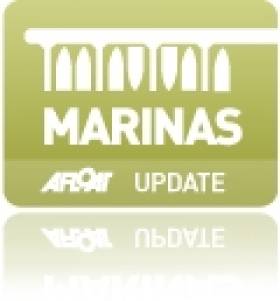Displaying items by tag: Down Cruising Club
Strangford Lough's Down Cruising Club Makes Return to the Water
Down Cruising Club is celebrating a return to the water with a Members' Day next Saturday (22nd August). Located at Ballydorn, near Whiterock on Strangford Lough, DCC occupies an unusual clubhouse, the old Lightship, Petrel. It was built in 1915 of iron and steel riveted construction for the Commissioners of Irish Lights by the Dublin Dockyard Co. Bought by the club in 1968 for use as a clubhouse, it was towed on a high spring tide into The Dorn and tied up at the Quay. That November 'Petrel' was floated to her present berth using her own winch, two club boats and a very long cable made fast to a tree on Sketrick Island as a 'hand brake'!
 Sketrick Island on Strangford Lough
Sketrick Island on Strangford Lough
The word 'dorn' means a 'narrow channel, causeway or ford exposed at low tide, or a narrow channel passable at full tide. The place-name Ballydorn is from the Irish 'Baile an Doirn' then meaning, 'townland of the dorn'.
This small club has about 100 members who are interested in all aspects of boating and cruising. In addition, the club enjoys the facility of Ballydorn Quay, constructed in the mid-19th century, and its associated historic quayside store, the Black Shed. It is a beautiful and popular mooring ground with short stay pontoons.
The members will be looking forward to getting back to the 'new normal' after the effects of COVID 19. Kicking off the special day will be a Brunch followed by a Flotilla and Sail By rounded off with 'Outdoor Cuisine on the Quay.
More information from Commodore Phil Vidamour at [email protected]
Down Cruising Club is a small, friendly club of approximately 100 members, who are interested in all aspects of boating and cruising on Strangford Lough. The club is fortunate to be based at Ballydorn, on Strangford Lough, and to enjoy the unique facility of club headquarters in the form of the lightship "Petrel"
Visitors to Strangford Lough are advised to examine the up to date chart of the area and keep a close watch for the many perches, some of which are marked and some of which may not be marked. They are also advised to keep a close eye on tides when embarking and disembarking from the lightship pontoon.
On arrival DCC says a visiting skipper must report to the Bar Steward (VHF Ch 16 – Lightship Petrel) or a DCC Flag Officer/Council Member as soon as possible (contact details on Visitors' Information Notice on deck). Berthing instructions will be given according to the size and type of vessel if a berth is available.































































